
How To Accurately Pay & Retain Portfolio Sleeve Managers Within Your Managed Account Portfolio
While this model did have its many benefits, historically, there have been challenges in managing things like transitions, taxes, restrictions, and profitability.
July 23, 2021 | Financial Industry
Within the global financial services industry, one popular strategy that wealth management firms utilize to manage portfolios better is sleeve management, also known as sleeve accounting. Sleeves exist to allow financial advisors to segment and subcontract the management of a single portfolio to third-party experts more easily.
While this model did have its many benefits, historically, there have been challenges in managing things like transitions, taxes, restrictions, and profitability. Redi2 developed Wealth Manager, a scalable and high-performance solution for managed accounts to address these common concerns. Keep reading to find out more about how Wealth Manager can transform sleeve portfolio management for your firm.
What Are Sleeves?
Before getting into some of the specific features that Wealth Manager brings to the table, it’s important first to establish what a “sleeve,” “sleeve management,” and “sleeve-level accounting” are.
Wealth management firms began using sleeves to manage a single portfolio via multiple third-party experts. By doing this, each third-party specialist has trading authority over a specific segment of the portfolio known as a “sleeve.” The performance of sleeve managers is typically analyzed in the following ways.
Sleeve-Level Accounting
Sleeve-level accounting, also known as sub accounting, involves breaking up an account into subaccounts by tagging each tax lot to a subaccount. Doing this allows the portfolio to be split up so that different managers will have authority over various portfolio segments.
Sleeve-level accounting has become much less popular in recent years due to operational complexities, tax complexities, and increased risk. Sleeve-level accounting is typically replaced by “overlay” management, where one person executes all of the trades and all of the individual sleeve managers simply supply the models.
Sleeve-Level Reporting
Sleeve-level reporting is simply reporting the returns of each sleeve separately. When utilizing multiple sleeve managers, sleeve-level reporting can evaluate each manager’s performance better independently. This method of reporting is one of the most typical models used today.
While, in theory, sleeve-level reporting sounds like the most logical way to report performance, the reports rarely give you the whole picture. We’ll discuss this more at length below.
Sleeve-Level Rebalancing
In practice, sleeve-level rebalancing is any rebalancing process where the sleeves have some effect on rebalancing. However, by definition, sleeve-level rebalancing is rebalancing each sleeve independently of the others.
Sleeve-level rebalancing is typically used in conjunction with sleeve-level reporting because it reduces the chances of one individual sleeve influencing the performance reporting of the other sleeves.
Sleeve-level rebalancing does have its drawbacks. Typically, there is no real way to handle the tax and risk of the portfolio on a sleeve-by-sleeve basis as this is calculated at the portfolio level. This can make sleeve management less tax-efficient and more operationally complex than holistically managed portfolios.
Disadvantages Of Traditional Sleeve Management Payment Models
While sleeve management can be a great way to scale your practice through sub-advisors, sleeve-level reporting can often be more trouble than it’s worth. Generating reports can be time-consuming, the data produced is often not valuable, and it can have a potential negative impact on investor interests and sleeve-manager performance.
For example, let’s say there is an account with $2 million on January 1. The overlay manager has allocated 50% to “Sleeve A” and 50% to “Sleeve B.” Sleeve A’s strategy results in a 50% loss during the first quarter, while Sleeve B’s strategy results in a 50% gain.
At the end of the quarter, it would still look like there is $2 million in assets in the account, and the sleeves are split evenly so that both managers are paid the same amount. By not correctly rewarding the performance of the manager of Sleeve B, you’re at risk of losing a valuable asset to the firm.
In addition, 50% of the account would still be invested in an underperforming strategy as opposed to the strategy that resulted in a 50% growth. Missing this data ultimately works against the account’s best interest and puts the firm at a greater reputational risk.
Accurate Sleeve-Level Reporting With Wealth Manager
Wealth Manager allows you to flip the traditional model of sleeve level reporting on its head by giving you awareness of the assets under each sleeve. For example, let’s say an account has more than one investment strategy. Wealth Manager will provide you with the ability to analyze the performance of each manager to identify which strategy is performing and which is not.
You can easily swap managers in and out to allow you to maximize the performance of any given sleeve, or even remove existing managers and add new ones in the middle of a period. Most importantly, it allows you to analyze assets under management, not just the allocation of assets.
For example, an account is split into three separate sleeves – A, B, and C. Sleeve A is considered the “safe” sleeve and holds 50% of the assets. Sleeve B and C have 30% and 20% allocated to them, respectively.
Sleeve A shows safe, slow growth; however, Sleeve’s B and C both outperform the growth rate considerably. This paints a very different picture than one might see if simply looking at the overlay allocation.
Accurately Reward Sleeve Managers
Wealth Manager will help you quickly identify the opportunity to compensate the managers based on the real assets under management, not just the allocation of the overlay allocation.
Armed with this information, you are now in a position to compensate your sleeve managers based on their performance – not just assets under management. As a financial advisor, being able to reward sleeve managers accurately is advantageous for several reasons.
First and foremost, not all sleeve managers are created equally. When you find a talented sleeve manager that shows excellent returns, you want to retain that person for as long as possible. If that sleeve manager feels they’re under-compensated, or worse, another manager may be getting rewarded for their work; you will likely lose that sleeve manager.
In addition, you will be able to identify under-performing sleeves or sleeve managers more easily. Not only will this make it easier for you to “trim the fat” if necessary, but it will also give you the visibility necessary to maximize the returns for your clients. When financial managers identify under-performing sleeves, it’s quick and easy to simply swap out a sleeve manager or reallocate funds to a different sleeve for better returns.
Schedule A Demo Of Redi2 Wealth Manager Today
Redi2 Wealth Manager is the ideal solution for wealth platforms currently using sleeve-level reporting to compensate independent asset managers. Not only will you ultimately show better returns for your clients by having greater visibility into the performance of each sleeve, but you’ll keep your sleeve managers happy by rewarding them based on their performance.
Wealth Manager is a cloud-based solution that was designed for managed accounts. It offers client billing features, fee disclosures, complex payouts, flexible billing templates, and so much more. If you’d like to take a tour of the Wealth Manager platform, click the button below to schedule a demo.
